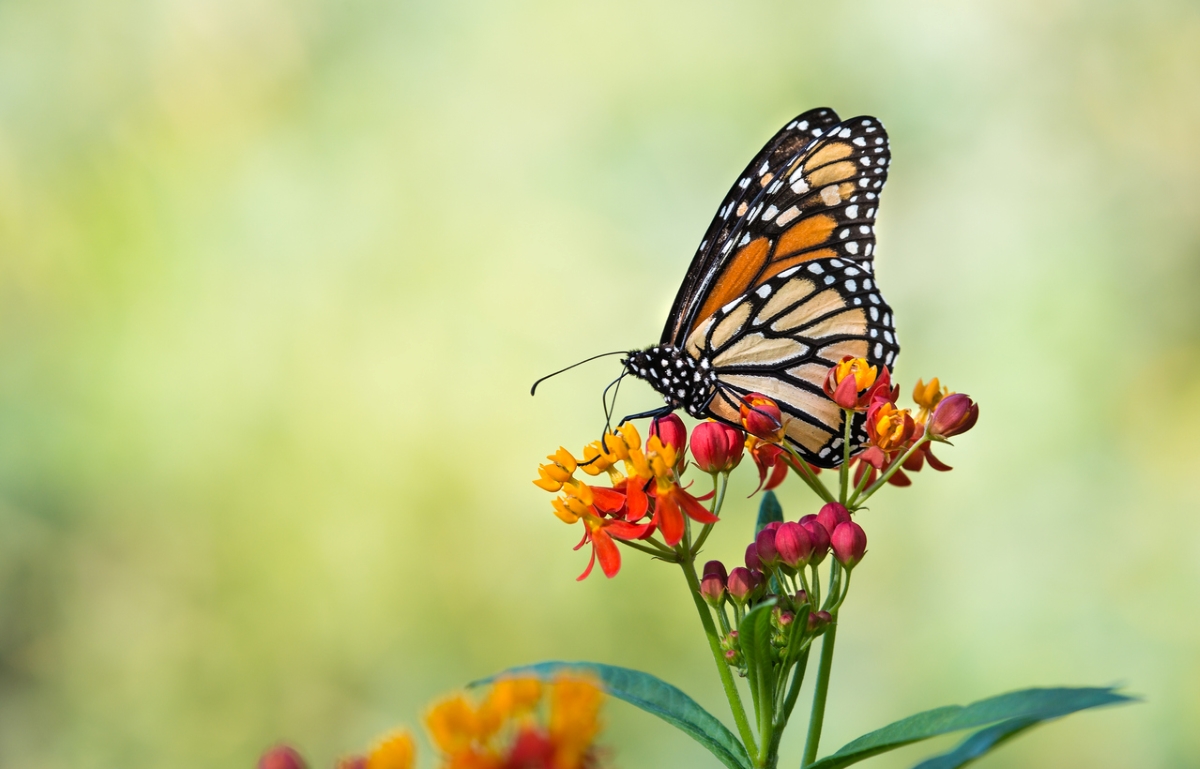

We may earn revenue from the products available on this page and participate in affiliate programs. Learn More ›
Watching butterflies flit around the yard is one of life’s simple pleasures. Butterflies are not only calming to watch, but they play an important role in the health of backyard plants. Most plants need pollinators to reproduce, and butterflies are one of the best pollinators out there. Because they can be a bit picky with food sources, it’s best to give them several choices.
What flowers do butterflies like? In general, they’re attracted to brightly colored blooms and flowers rich in sweet nectar. Continue reading to learn about 15 flowers that attract butterflies.
RELATED: 18 Types of Butterflies All Home Gardeners Should Know
1. Floss Flowers (Ageratum houstonianum)
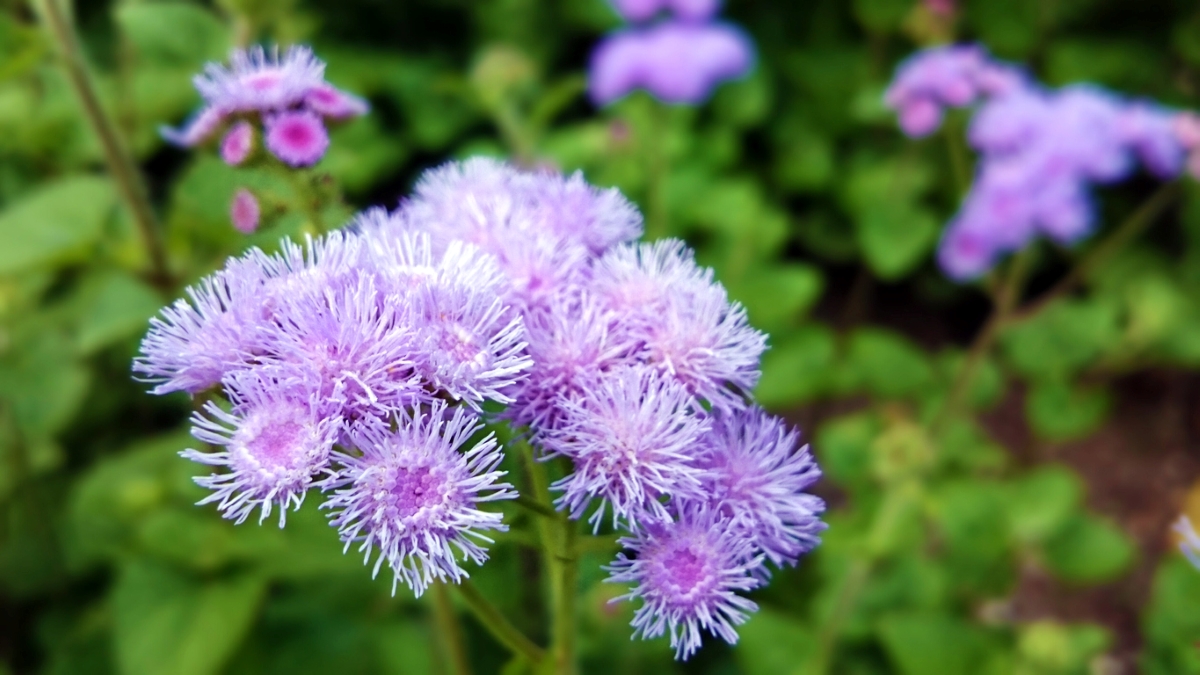
When it comes to butterfly garden flowers, Asteraceae family members—like the floss flower—are a staple. Native to Mexico, these fluffy purple-blue flowers offer a long bloom time from late spring to first frost in cooler climates—making them an important source of nectar for butterflies preparing for winter migration.
Hardy from USDA Zones 2 to 11, floss flowers are butterfly-attracting plants that grow easily in just about any garden. Give them full sun to part shade, water them at soil level in the morning, and these butterfly garden flowers will fare well in beds, borders, containers, or rock gardens.
2. Daylily (Hemerocallis)
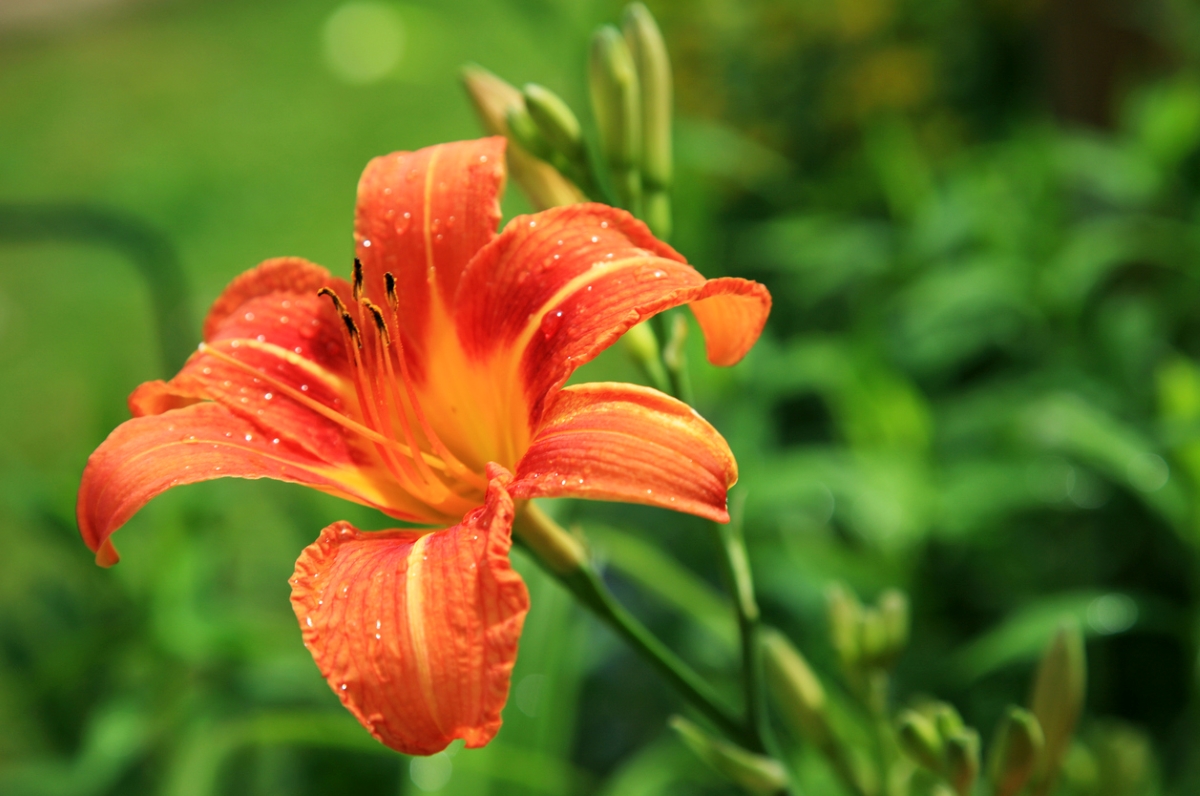
Landscapes with banks and slopes offer great locations for easy-to-grow daylilies—a family that consists of approximately 15 species. Daylilies can be identified by their long-stalked clusters of bell-shaped flowers, with blooms in hues that range from yellow to red. Hardy from Zones 4 to 9, daylilies thrive in full sun to partial shade in well-draining soil that is rich in nutrients.
The name of the daylily is quite literal, since that’s how long the blooms of most varieties last, but they can continue to appear from early summer to frost, giving flowers throughout the season. These are flowers that attract hummingbirds and butterflies, however, pet owners should be aware that they are toxic to cats.
3. Butterfly Bush (Buddleja davidii)

With the moniker butterfly bush, this sun-loving deciduous shrub has to be included on a list of flowers that attract butterflies. Native to China and Japan, the butterfly bush has a spike-shaped terminal with purple axillary flower clusters that bloom from June to September.
Planting a butterfly bush in a backyard does come with a warning in some regions. Though it has flowers that attract hummingbirds and butterflies, this bush can be an aggressive spreader that can reach from 6 to 12 feet high. It has escaped gardens and naturalized in areas across the country, which is great for butterflies, but makes it a noxious weed in some states. If concerned, look for a sterile variety that will still produce flowers but no seeds.
4. Hibiscus (Hibiscus spp.)
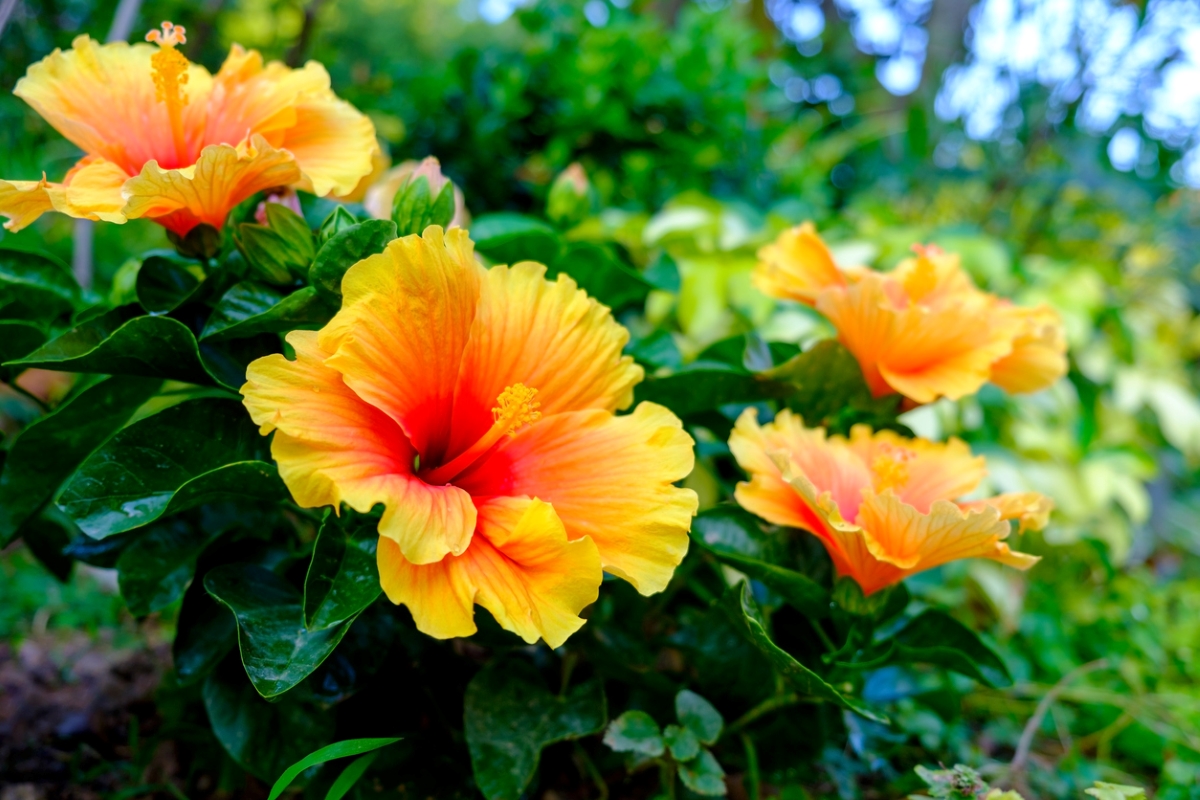
It’s hard to miss the gigantic flowers on a hibiscus. Depending on the species, these butterfly-attracting plants grow from 2 to 8 feet tall with delicate flowers that are singular or grow in clusters. Some flowers on perennial hibiscus plants (rose mallow) can reach 12 inches across, creating quite the attraction for butterflies and other pollinators. Rose of Sharon (Hibiscus syriacus) shrubs often feature smaller flowers in great abundance.
Hibiscus is native to areas with warm temperatures and tropical regions, so they love full sun and frequent, deep watering. Plant them in rich, well-draining soil in areas away from strong winds to avoid breakage—a bonus for butterflies, as they like to be sheltered from the wind too!
5. Lupine (Lupinus spp.)
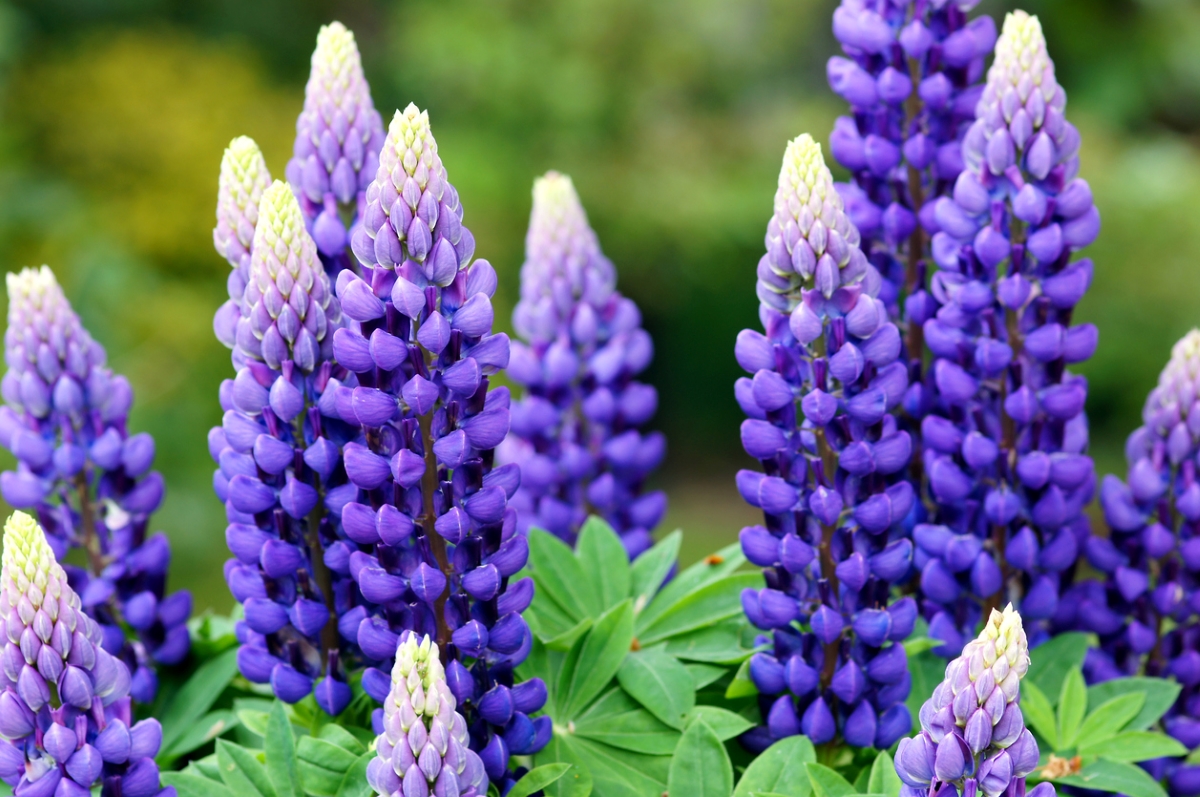
Butterflies are drawn to a lupine’s flower spires. Made up of small flowers in colors that range from white to purple, lupines show off their full blooms in late spring to midsummer. Depending on the variety, these butterfly garden flowers can grow in Zones 4 to 8. They thrive in a variety of soils, but with long taproots, lupines do best in sandy soil.
As wonderful as they are for butterflies, beware these members of the pea family. All parts of this butterfly plant are toxic if ingested. Lupines are great to behold, but not to eat.
6. Snapdragon (Antirrhinum majus)
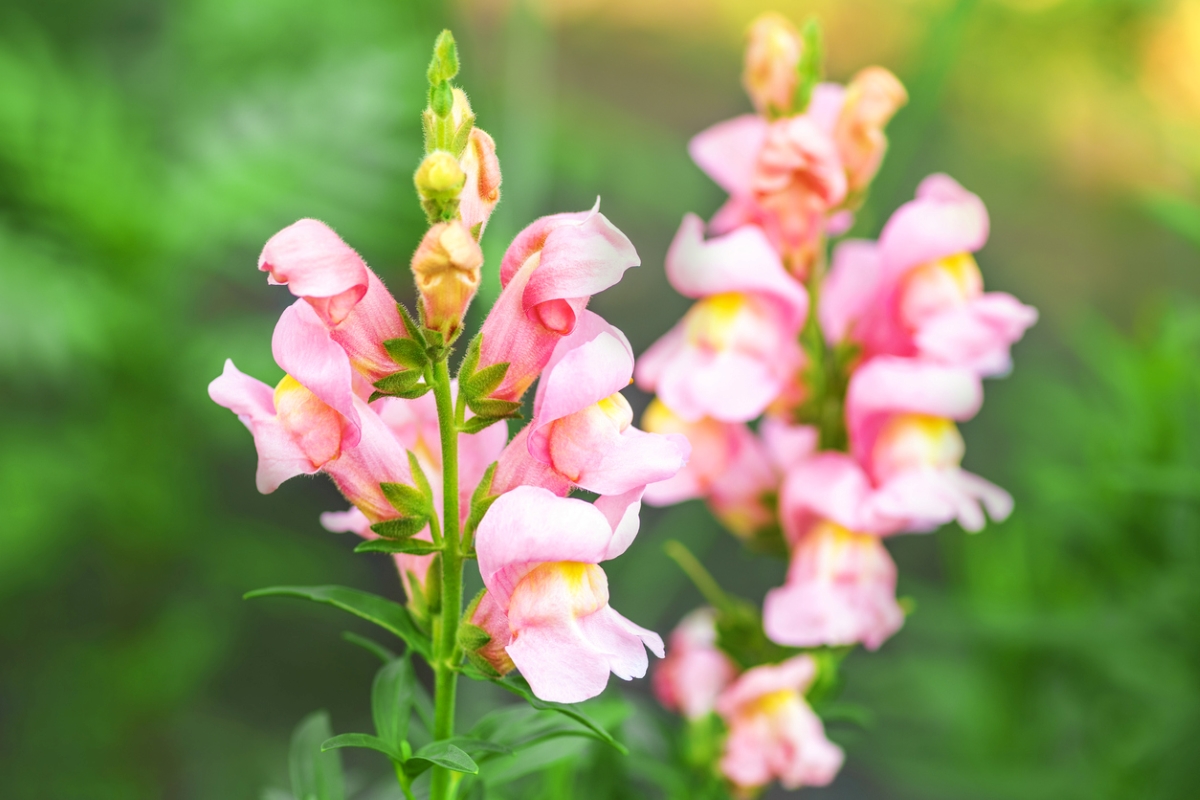
Snapdragons can add a rainbow of color to an outdoor space, offering yellow, pink, red, orange, peach, purple, and bicolor options—and it’s no secret butterflies are drawn to vibrant colors. The common name of these butterfly plants references the tubular, closed flowers that resemble a dragon if you use your imagination. Classified as short-lived perennials, snapdragons are hardy to Zones 7 to 10, and prefer areas of full sun.
Growing between 1 and 3 feet tall, snapdragons fare best in organically rich, well-draining soil that’s kept moist through medium watering efforts. Keep them happy and snapdragons bloom from April to frost.
7. Zinnia (Zinnia spp.)
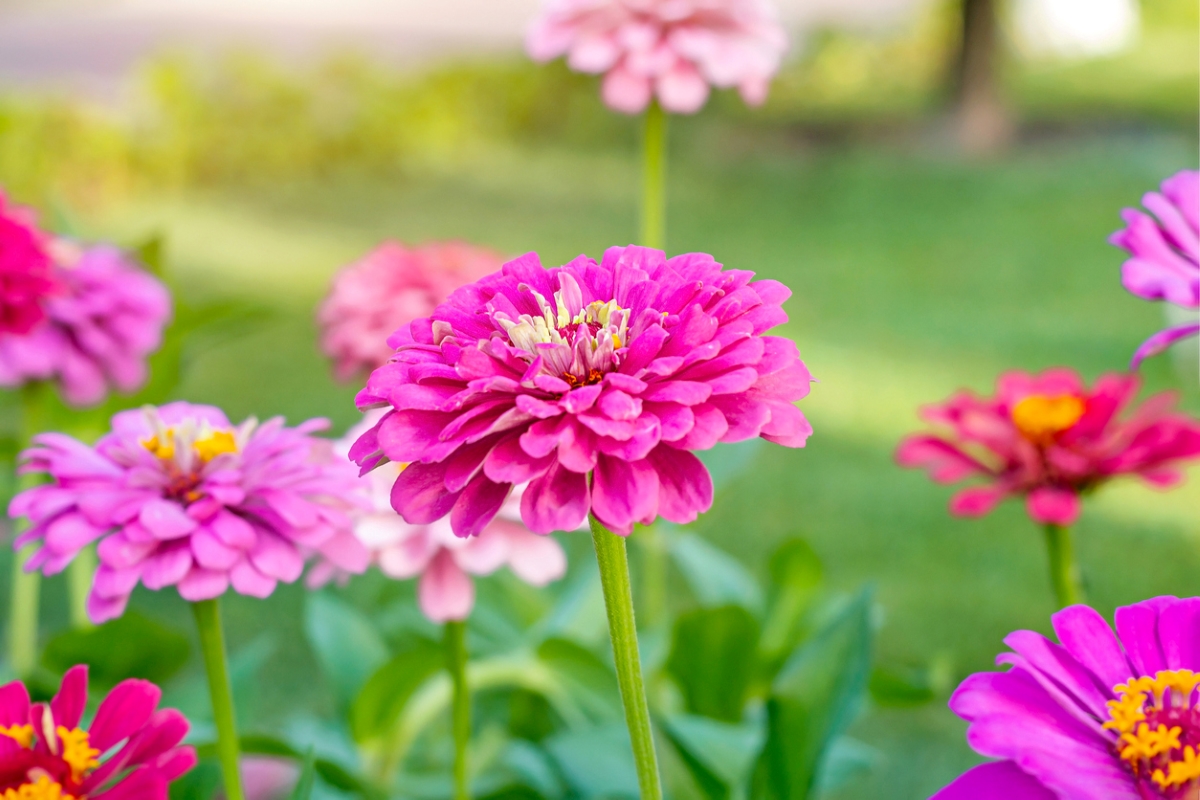
Sun-loving zinnias are part of the Asteraceae family—daisy-like flowers that bloom in summer. Butterflies love zinnias because they bloom heavily and brightly up until the first frost. These annuals tend to have single or multiple rows of petals, and may or may not have visible centers depending on the species.
Gardeners love zinnias because they’re easy to grow and there’s a type of zinnia for practically any height, color, container, or garden. These flowers for butterflies adapt to most soil conditions, but grow faster in soils with a pH between 5.5 and 7.5 with the occasional addition of compost.
8. Lilac (Syringa spp.)
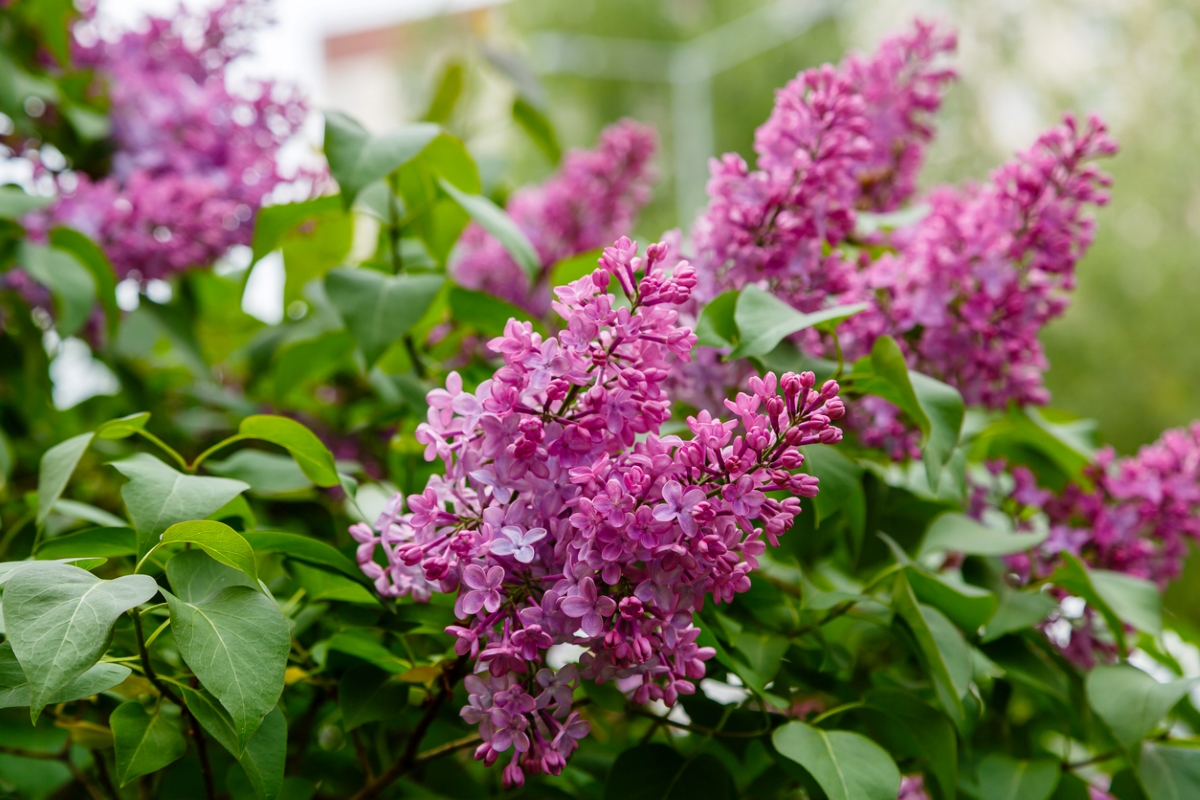
Known for their distinct fragrance, lilacs come in the form of flowering shrubs or small trees in the olive family. These deciduous, spring-blooming plants are full of clusters containing many small, four-petaled flowers. Often recognized by a purple or white color, lilac species also come in blue, pink, pale yellow, and more.
This tough butterfly plant lasts a long time, and can grow for more than 100 years. Common lilacs can grow between 8 and 12 feet tall, and they thrive in rich, well-draining soil that has a pH around 7.
9. Black-Eyed Susan (Rudbeckia hirta)
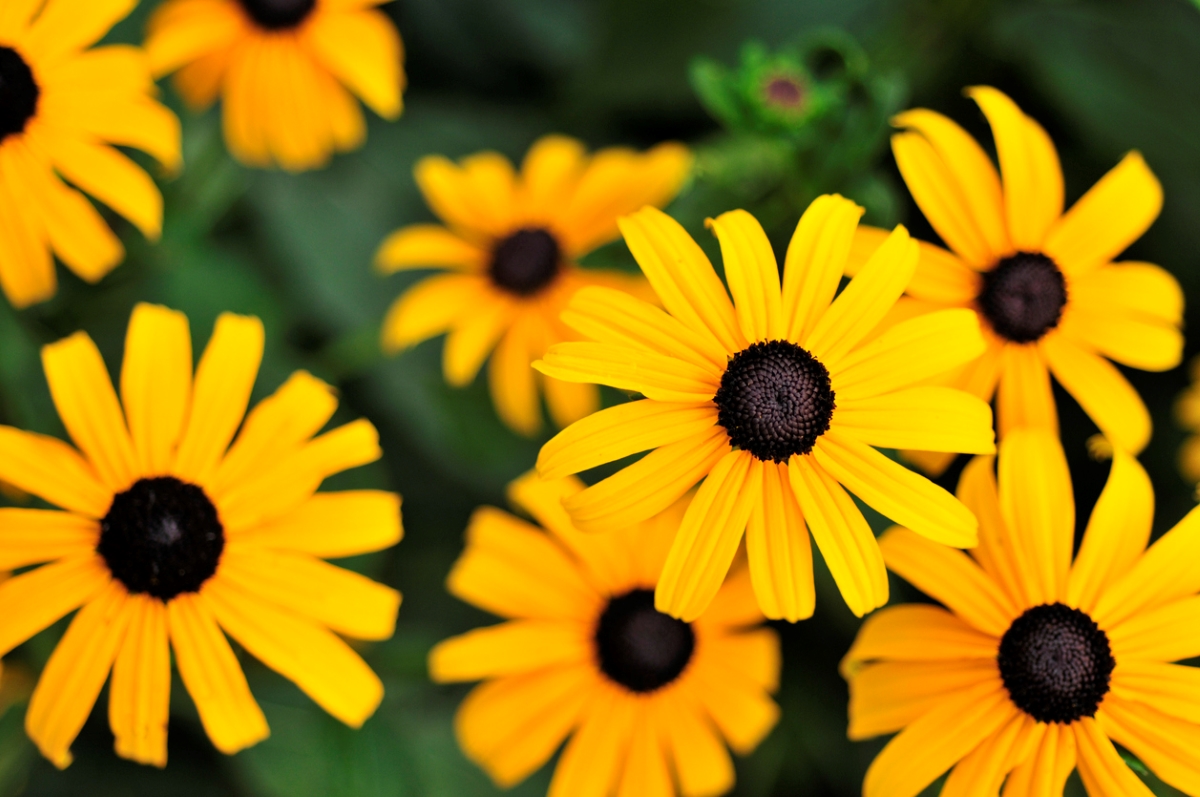
Another member of the Asteraceae family, black-eyed Susan brings a bright pop of yellow color to a yard or garden. Their daisy-like appearance features a dark brown disc where butterflies can access the flower’s nectar. These short-lived perennials are native to the central U.S., and they’re a terrific option for areas that experience heat and drought.
Hardy in Zones 3 to 7, black-eyed Susans are low-maintenance butterfly-attracting plants that can thrive in most types of soils, but not poorly draining or wet ones. Even with minimal care, they can grow 2 to 3 feet tall, and bloom from June to September.
10. Evening Primrose (Oenothera biennis)
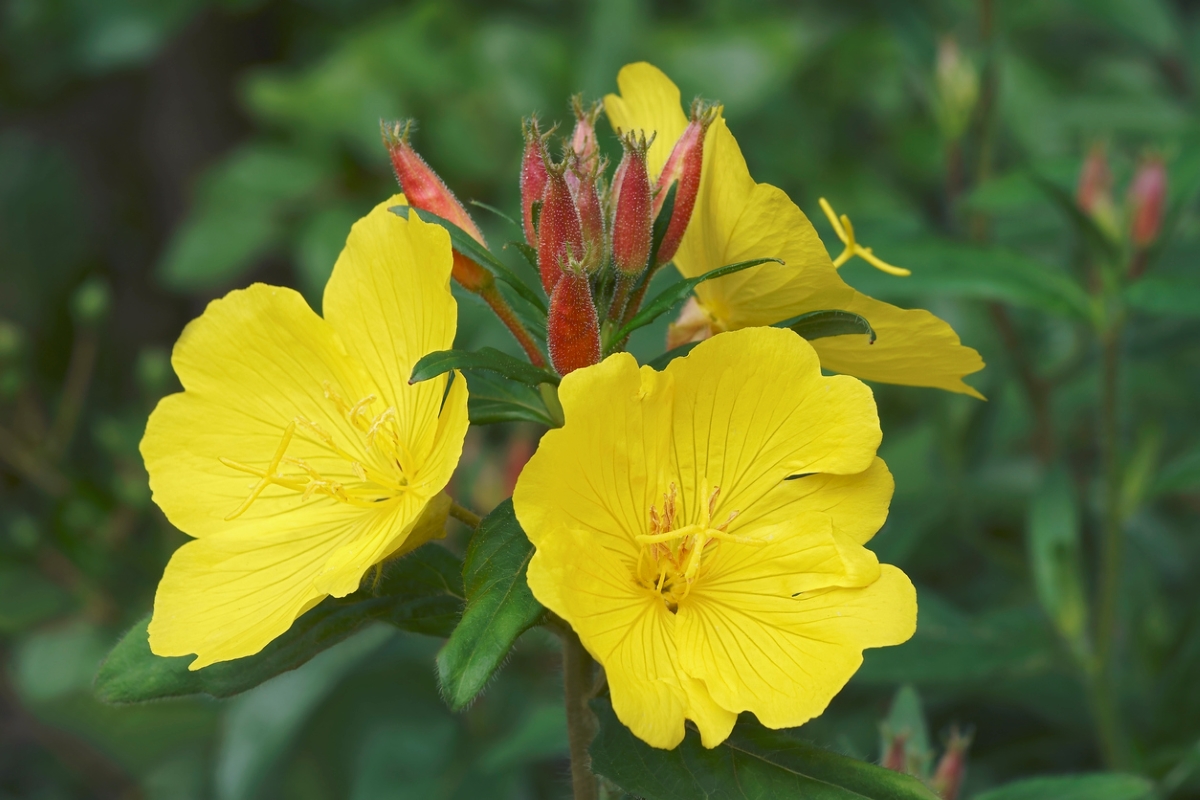
Large, four-petaled yellow flowers and a lemon scent are the calling card of the evening primrose. The best growing conditions for this biennial herb are rocky or sandy soils in areas of sun or partial shade. These butterfly garden flowers bloom in the evening and stay open until noon, making them a terrific source of nectar for butterflies that are out at dawn and dusk.
Since they are night blooming flowers, evening primrose will be a favorite of moths, too. Grow them in Zones 4 through 9.
11. Lavender (Lavandula)
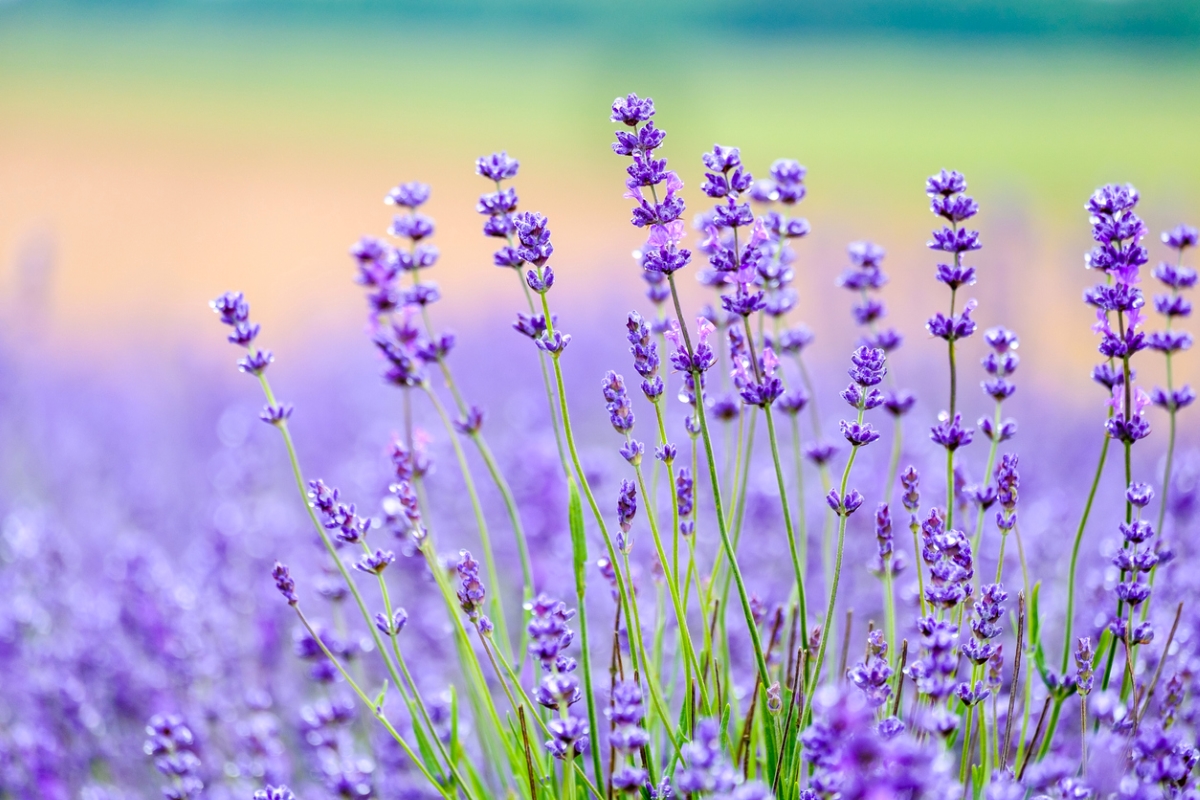
Flowers that attract butterflies grow on many types of plants, including this member of the mint family. Lavender shrubs have fragrant leaves and flowers growing on spikes atop long stalks. It’s an herb that gardeners and butterflies can both enjoy.
These evergreen plants for butterflies need full sunlight and good drainage in hardiness zones 5 to 10. Thankfully, lavender isn’t too particular about soil, as long as their light and drainage needs are met. English and Spanish lavender bloom in early summer and if gardeners harvest the flower stalks early for drying, another bloom period can occur later in summer. French lavender types typically bloom from spring into summer.
12. Phlox (Phlox spp.)
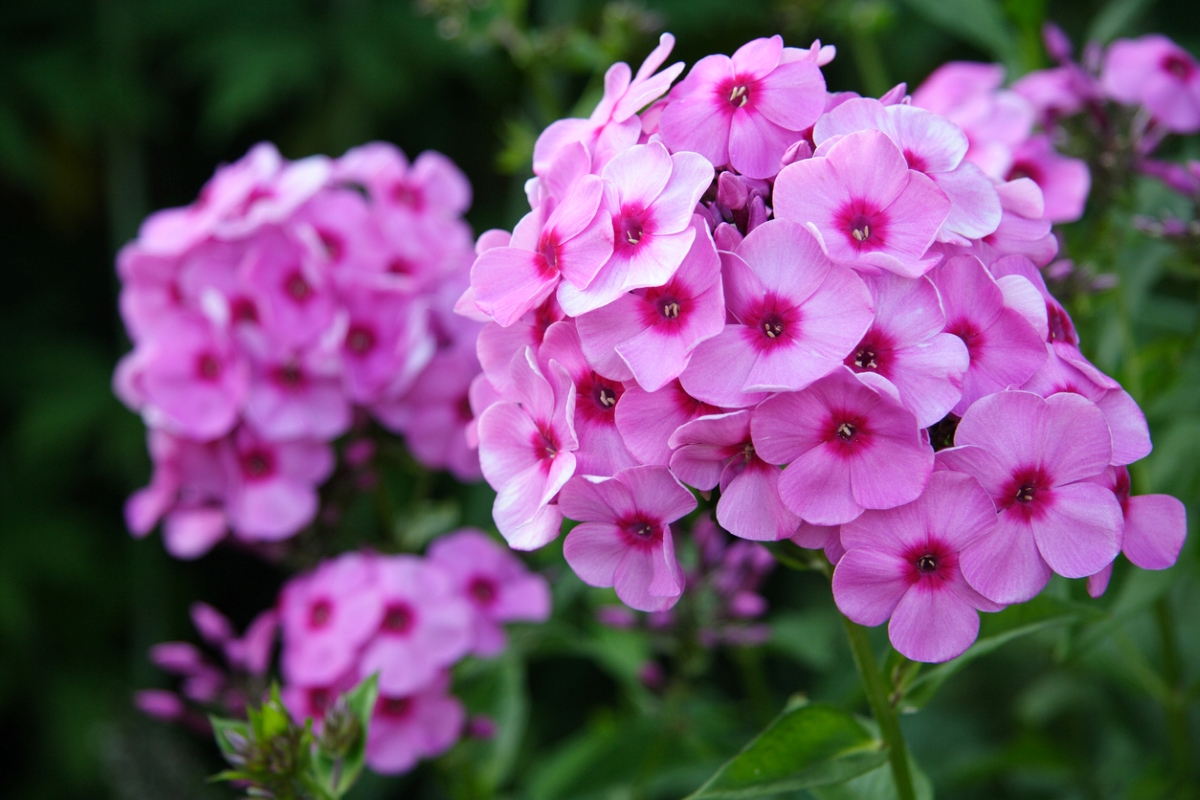
Phlox is a versatile species of herbaceous annuals or perennials, with 65 species in the genus. These butterfly-attracting flowers range in size from low-growing ground covers to taller varieties that reach heights of 5 feet. No matter which species, these butterfly plants have clustered heads of star-shaped flowers with five flaring lobes. Depending on the variety, homeowners can find phlox in a range of colors such as white, pale blue, purple, red, and pink.
Hardiness depends on the particular plant, but various types of these butterfly garden flowers can survive in Zones 2 through 9, with sun exposures from full sun to shade and bloom time ranging from spring to summer.
13. Marigold (Tagetes spp.)

Marigolds are excellent for companion planting, but they’re also flowers that attract butterflies to a pollinator garden. Bright blooms similar to carnation heads come in cheerful hues of orange, red, yellow, and white. These flowers bloom all summer long, providing butterflies with a reliable source of nectar for a long time—gardeners can gain even more blooms through the season by deadheading spent flowers.
Favoring neutral soil, and full to partial sun, certain species of marigold can be drought-tolerant, and others wet-tolerant. There’s a marigold out there for most butterfly gardens!
14. Petunia (Petunia spp.)
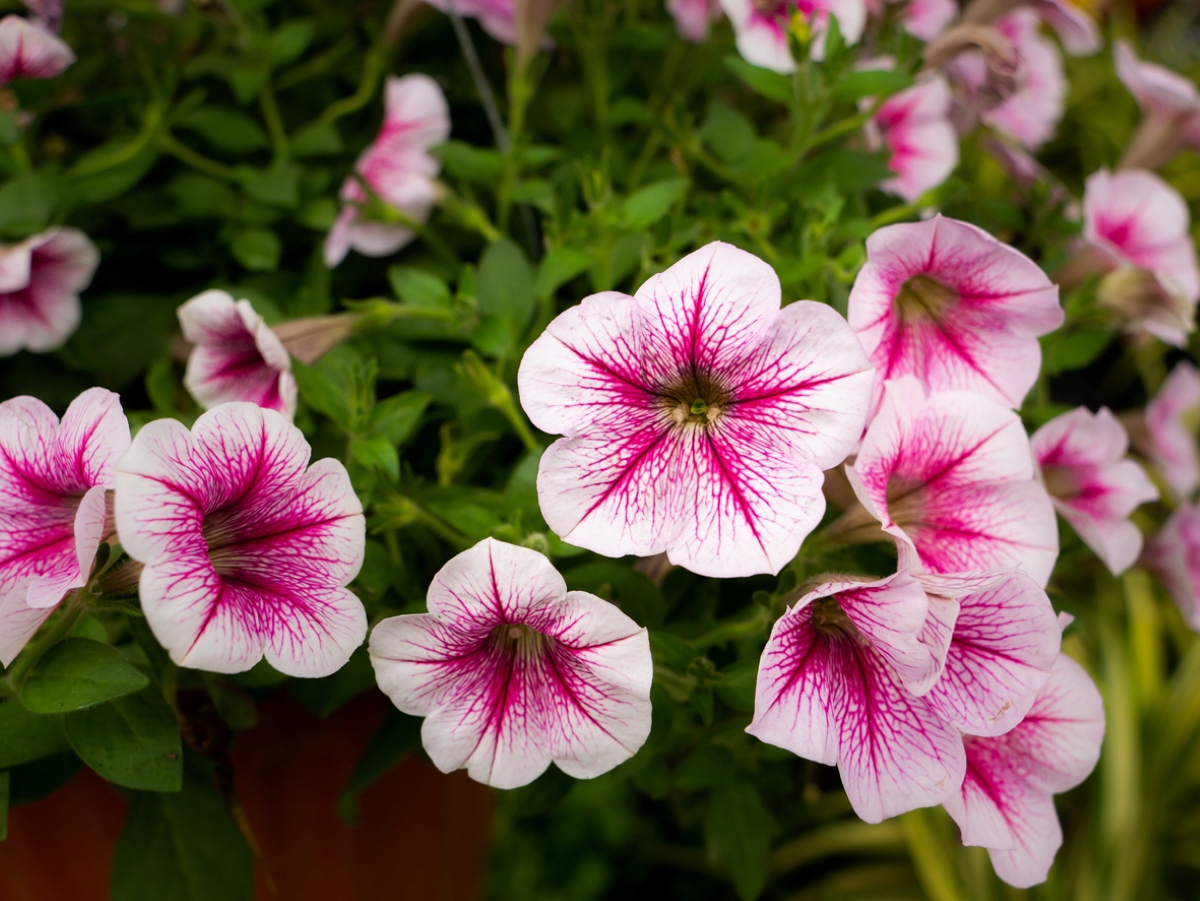
Often found in hanging baskets, borders, and container planters, petunias offer long flowering times that prompt return visits from butterflies. As colorful annuals, petunias are eye-catching additions for people and pollinators. Depending on the variety, petunias can vary from 6 to 18 inches tall.
Though classified as an annual, in Zones 9 to 11, petunias can be considered tender perennials. These butterfly plants can become leggy, but combat this by keeping them in full sun, since they tend to flower poorly in shade. Petunias like slightly acidic to neutral soil that drains well, and adding some finished compost to the soil will only make them happier.
15. Milkweed (Asclepias syriaca)
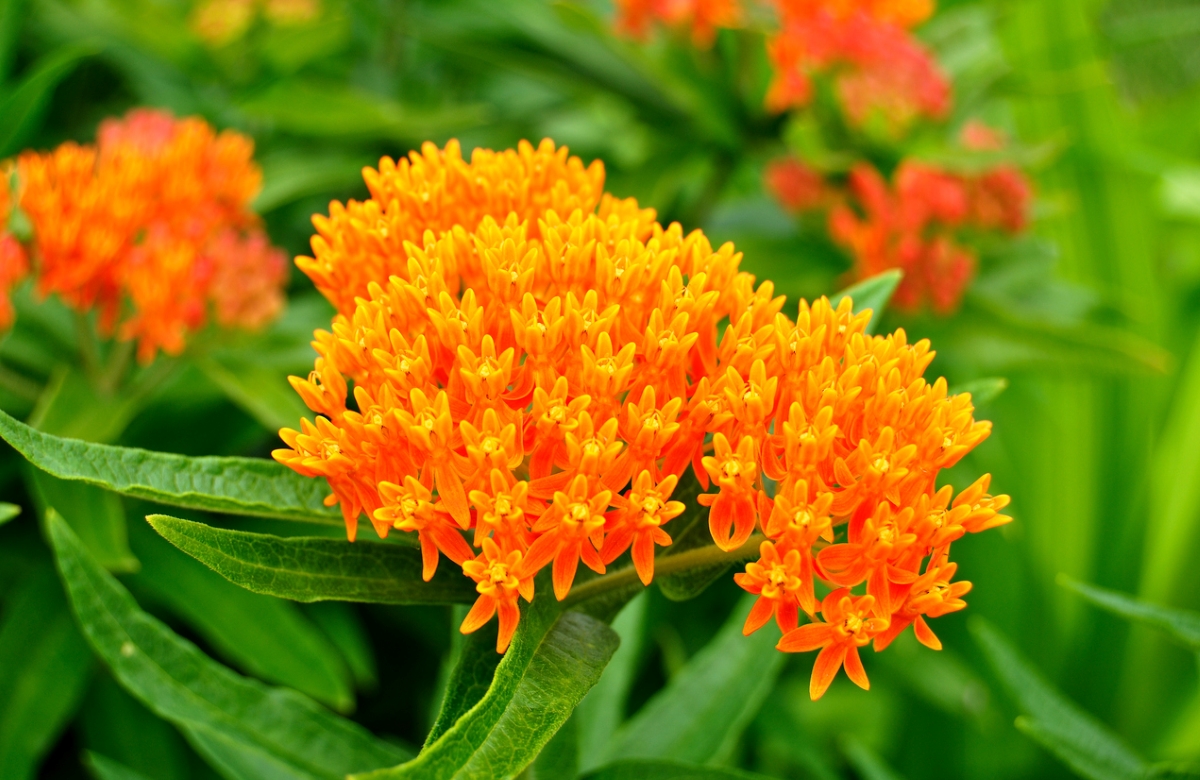
Milkweed is one of the most important plants that attract butterflies. Not only does milkweed feed adult butterflies and caterpillars, but it is critical for the monarch butterfly species, as this is the only host plant for monarch larvae.
These butterfly plants have white, pink, orange, or purple spherical umbels with as many as 100 flowers per umbel. They bloom from June to August, needing full sun and moist, slightly acidic to neutral soil. Hardy in Zones 3 to 9, dozens of species of milkweed, in addition to this common milkweed, are native to regions of North America.
Beware when tending to these butterfly-attracting plants, as the milky sap from leaves and stems is poisonous—but only toxic in large quantities.
